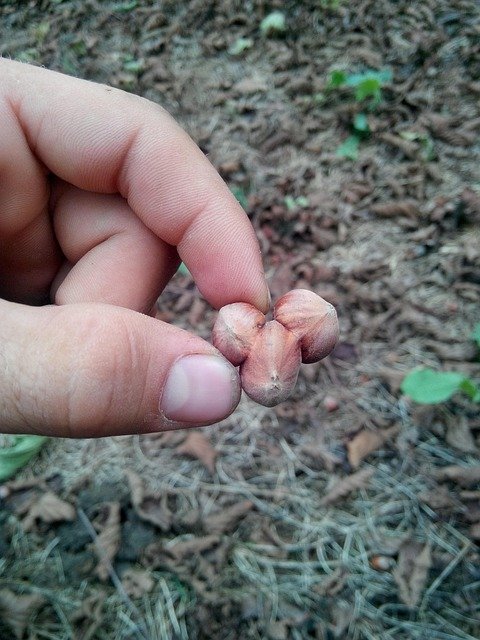Smart Guide to Buying Fruit Trees on Sale: Choosing Quality, Timing, and Care
Purchasing fruit trees during sales can offer significant savings, but success depends on making informed decisions about variety selection, nursery quality, and proper care. Understanding climate compatibility, rootstock types, and establishment practices ensures your discounted trees will thrive for years to come, delivering both immediate savings and long-term harvests.

Finding quality fruit trees at reduced prices requires strategic planning and knowledge about what makes a healthy, productive tree. While sales events can provide excellent opportunities to expand your orchard or start a new garden, the key lies in balancing cost savings with long-term tree health and productivity.
Choose Fruit Varieties Suited to Your Climate, Soil, and Available Space
Successful fruit tree cultivation begins with selecting varieties that match your local growing conditions. Climate zones determine which species will survive winter temperatures and receive adequate chill hours for proper fruit development. Apple trees, for example, require 400-1000 chill hours below 45°F, making them unsuitable for consistently warm regions.
Soil compatibility plays an equally important role in tree selection. Citrus trees prefer well-draining, slightly acidic soil with pH levels between 6.0-7.0, while stone fruits like peaches and plums tolerate a broader pH range. Space considerations affect both tree size and productivity, as dwarf varieties can produce substantial harvests in containers or small yards, while standard trees require 15-25 feet between plantings.
Know Tree Types, Sizes, Rootstocks and What They Mean for Growth and Care
Understanding rootstock influence helps predict tree behavior and maintenance requirements. Dwarfing rootstocks like M9 for apples create compact trees reaching 6-10 feet, ideal for intensive management and early fruiting. Semi-dwarf rootstocks produce medium-sized trees with balanced vigor and productivity, while standard rootstocks develop full-size trees requiring more space but offering greater longevity.
Tree age at purchase affects establishment time and initial care needs. Bare-root trees, typically 1-2 years old, cost less and establish quickly when planted during dormancy. Container-grown trees offer planting flexibility throughout the growing season but require careful attention to root development and watering during establishment.
Evaluate Nurseries and Online Sellers: Reviews, Certifications, and Plant Health
Reputable nurseries maintain proper plant health certifications and follow industry standards for disease prevention. Look for nurseries certified by state agriculture departments, which ensures compliance with shipping regulations and pest management protocols. Customer reviews provide insights into plant quality, packaging methods, and customer service responsiveness.
Physical inspection reveals tree health indicators including trunk diameter, branch structure, and root development. Healthy trees display even bark coloration, well-spaced scaffold branches, and white, fibrous roots without circling or girdling patterns. Avoid trees with mechanical damage, pest signs, or weak branch attachments that indicate poor nursery practices.
Compare Sale Prices, Shipping Costs, Guarantees, and Return Policies Before Buying
Effective price comparison requires evaluating total costs including shipping, handling, and potential replacement expenses. Local nurseries often provide better value when shipping costs are factored in, especially for larger trees or multiple purchases. Online retailers may offer broader variety selection but require careful attention to shipping timing and packaging quality.
| Provider Type | Tree Size | Price Range | Shipping Cost | Guarantee Period |
|---|---|---|---|---|
| Local Nursery | 5-7 feet | $25-60 | None | 30-90 days |
| Online Specialty | 4-6 feet | $20-45 | $15-35 | 1 year |
| Big Box Store | 3-5 feet | $15-35 | Varies | 30 days |
| Mail Order Catalog | 2-4 feet | $18-40 | $12-25 | 6 months-1 year |
Prices, rates, or cost estimates mentioned in this article are based on the latest available information but may change over time. Independent research is advised before making financial decisions.
Guarantee policies vary significantly between sellers, with some offering full replacement for tree death within specified timeframes, while others provide only partial refunds or store credit. Understanding return procedures and documentation requirements prevents complications if tree replacement becomes necessary.
Planting Best Practices and Early Care to Help Sale Trees Establish and Thrive
Proper planting technique significantly impacts long-term tree success, regardless of purchase price. Dig planting holes twice as wide as the root ball but no deeper than the original soil level. Backfill with native soil rather than amended mixtures, which can create drainage problems and restrict root expansion beyond the planting area.
Water management during the first growing season determines establishment success. Deep, infrequent watering encourages deep root development, while frequent shallow watering creates surface root systems vulnerable to drought stress. Apply 2-4 inches of organic mulch around the base, keeping mulch several inches away from the trunk to prevent pest and disease issues.
Pruning requirements depend on tree age and training system goals. Young trees benefit from light pruning to establish scaffold branches and remove competing leaders. Avoid heavy pruning during the first year, as trees need maximum leaf surface area to establish strong root systems and energy reserves for future growth and fruit production.
Timing sale purchases strategically maximizes both savings and planting success. Late fall and early spring sales coincide with optimal planting windows for bare-root trees, while container trees purchased during summer sales require extra attention to watering and heat protection. Planning purchases around seasonal sales cycles allows gardeners to acquire quality trees at reduced prices while ensuring proper establishment conditions.




